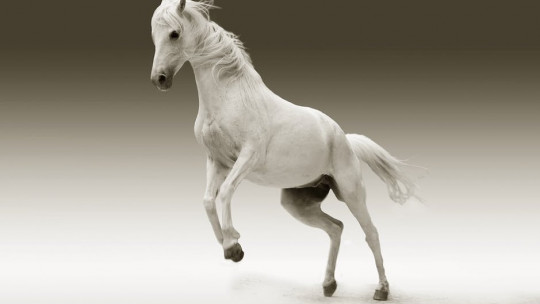Throughout history, human beings have imagined a great diversity of fantastic creatures, generally with the purpose of trying to explain unclear or inexplicable aspects of reality through various narratives. These creatures are part of the mythology of different cultures, and often possess powers that greatly exceed us. Centaurs, furies, mermaids, fairies… and giants.
These latter creatures are usually synonymous with power and strength, often surrounded by an aura of voracity, bestiality and horror. But for some people, giants and the behaviors attributed to them are also a source of fascination and even sexual gratification. We are talking about people who suffer paraphilia known as macrophilia or gigaphilia which we are going to talk about next.
In the realm of human desires and fantasies, there exists a phenomenon known as macrophilia. This intriguing fascination revolves around the attraction to giants or giantesses, both in fictional realms and in real life. In this comprehensive exploration, we delve deep into the psyche of individuals who are captivated by the allure of enormous beings, shedding light on the intricacies and complexities of this unique phenomenon.
Understanding Macrophilia: A Psychological Perspective
At its core, macrophilia is a manifestation of human sexuality and desire. Individuals who identify as macrophiles experience arousal and attraction towards the idea of beings of immense size. This attraction can manifest in various forms, including fantasies, artwork, literature, and even in interpersonal relationships. From towering giants in folklore to larger-than-life characters in popular culture, the allure of immense size captivates the minds of macrophiles across the globe.
Exploring the Origins: Mythology, Folklore, and Pop Culture
The roots of macrophilia can be traced back to ancient mythology and folklore, where tales of colossal beings have been prevalent for centuries. From the Titans of Greek mythology to the giants of Norse legend, stories of immense creatures have captured the imagination of humanity throughout history. In modern times, popular culture has further perpetuated the fascination with giantism, with iconic characters such as Godzilla, King Kong, and the towering Titans of cinema enthralling audiences worldwide.
Macrophilia: the attraction to giants
The sexual attraction to giants (regardless of their sex) or to giants is called macrophilia. the idea of being devoured or crushed by them We are faced with a type of sexual attraction linked to fantastic beings that do not exist in real life, something that means that this sexual preference is generally limited to fantasy and onanism.
It is necessary to keep in mind that having occasional fantasies of this type can be, although relatively infrequent (although pornography websites state that content of this type enjoys a certain popularity), not pathological, and can simply serve as a fetish.
However, it becomes a paraphilic problem when sexual fixation on giants becomes the only stimulus capable of generating sexual excitement. either it generates discomfort or it becomes an element that limits a person’s life (for example, not being able to enjoy relationships or occupying a high percentage of their thoughts and behavior on a daily basis) in a period of at least six months.
There are different preferences in relation to this type of paraphilia, one of the most common being the fantasy that a woman or man of normal size begins to grow by tearing their clothes, the room and/or the building in which they are located. Another of the most common fantasies has to do, as we have already said before, with being crushed or with the idea of being devoured: the idea that the giant in question proceeds to destroy the environment and crush or eat people becomes sexually suggestive for these subjects.
And the type of interaction between giant and human in these fantasies can be very varied, from maintaining sexual relations with penetration (whether being the recipient of a male giant’s member or penetrating the vagina/anus of a female giant ), oral contact or being licked, chewed or swallowed by one of these beings (without the need for the contact to be sexual in itself), masturbating in contact with any part of one of these beings’ body, being flooded by the effluvia sexual nature of these beings, being crushed or manipulated like a toy…
Fantasy too can relate to the subject in question being shrunken to a minuscule size while his object of desire retains its usual measurements, what is actually important is the perception of differences in size or power.
Generally, those who have this type of paraphilia tend to be heteroseuxal men (whose object of desire are giant women), but there are also heterosexual women and macrophilous homosexual men whose attraction is towards giants, as well as homosexual women whose object of desire are also giantesses. In fact, macrophilia transcends sexual orientation itself heterosexual or homosexual subjects may feel attracted to entities of the opposite sex to their preference due to the fact of being giants.
Practically limited to fantasy
Macrophilia is a very particular paraphilia, given that the object of desire of the people who feel this sexual attraction is non-existent in reality. In this way, a person with macrophilia mostly does not have the possibility of putting their sexual fantasies into practice, limiting yourself to fantasizing about an interaction with these beings and/or masturbatory practices.
As a general rule, this fact is known by macrophilic people, and is not the product of any type of loss of the sense of reality. This does not imply, however, that in some cases there may be a loss of contact with reality derived from substance consumption or some neurological or psychiatric disorder, but it would be a coincidence and not something that defines macrophilia itself.
Cinema, the Internet and new technologies have also allowed people with this sexual preference to find highly exciting material for them. There are even videos and photographs in which perspective, optical effects or image modification programs are played to make actors or actresses appear larger than even a building, or in which toys are used as soldiers. of lead to represent scenes of crushing or destruction.
However, the truth is that some people tend to look for sexual partners as close as possible to their objects of desire, specifically people with a height and wingspan above average or significantly higher than the subject itself. In this way, a person with this sexual inclination could look for a woman over two meters tall (who are called Amazons), or men with gigantism in order to get as close as possible to their erotic fantasy.
Causes of Macrophilia
As with other paraphilias, the mechanism through which this type of erotic inclination arises is not exactly known. However, there are different theories in this regard and it is even considered that it could have a lot to do with other sexual preferences such as those that link the pleasure-pain poles.
In this sense, the basic idea of macrophilia It has a lot to do with sadomasochism and the games of domination-submission: a giant is a force of nature before which one is insignificant, a raw power capable of destroying us and before which we can only submit or be destroyed.
Thus, a possible explanation for this type of paraphilia is linked to the need or desire to be subjected and/or lose all control of the situation. This explanation seems to correlate with the fact that many of the people who fantasize about this type of object of desire are powerful people, responsible for large corporations, dominant and competitive who may wish to reverse their usual role. In addition to this, there may also be in some cases links with dangerous or even criminal paraphilias such as vorarephilia (sexual arousal derived from fantasy or the practice of acts of cannibalism).
Other types of theories could be linked to the existence of childhood traumas derived from sexual abuse during childhood, or from the presence of sadistic, restrictive and aggressive parents. In this case, the subject could end up normalizing and associating these behaviors with sex by people who surpass them in strength and size, and in some cases they could develop sexual fantasies with beings capable of destroying them once they become adults.
Finally, other authors consider that in the case of sexual preference for giant women (whether fantasies of men or women), there could be behind it a sexual desire for empowered women, capable of dominating, crushing and defeating the traditional gender roles that they viewed as sex. feminine as inferior and weak.
Macrophilia treatment
Macrophilia, when we are not talking about a sporadic fantasy but rather a paraphilia that generates discomfort or dysfunction in the life of the person who has this type of erotic fantasy (or the people with whom they have relationships), may require psychological and psychiatric intervention
When it comes to intervening, it is necessary to first assess the type of fantasies that the subject has and the meaning given to them, what is exciting about them and where the subject considers they come from. The existence of possible traumatic or aversive experiences in the subject’s life that have made them feel incapable or powerless, or that have entailed great inhibition of their own psyche and the need for excessive control of the situation, can also be assessed.
Based on this, elements such as cognitive restructuring could be needed in order to modify possible dysfunctional beliefs such as the need to control everything or the idea of being useless or the need to let oneself be stepped on/destroyed/manipulated to maintain human contact.
Emotion management training could also be positive for those people who suffered from some type of self-management problem, as well as working on self-esteem. If there is a traumatic event, it should be treated specifically based on each case. In addition, the possible difficulties or limitations that this type of sexual attraction may arise in daily life would have to be worked on.
Beyond this, aspects such as the search for the development of positive attachment with respect to non-paraphilic stimuli can be worked on with techniques such as masturbatory reconditioning, as well as the de-eroticization of the paraphilic stimulus.
Of course, it must be noted that only in cases where these fantasies represent a great functional limitation or discomfort in the subject himself, we would be talking about a paraphilia that could require treatment, with mere occasional and non-exclusive fantasy being another sexual preference that does not have to be considered pathological.
The Intersection of Fantasy and Reality: Fictional Depictions and Real-life Encounters
For many macrophiles, the allure of giantism extends beyond mere fantasy and fiction, permeating into their real-life experiences and relationships. Some individuals actively seek out partners who embody the qualities of giants, whether through physical stature or dominant personality traits. Additionally, the internet has provided a platform for macrophiles to connect with like-minded individuals, fostering communities where their desires and fantasies are accepted and celebrated.
Challenges and Stigma: Navigating Society’s Perceptions
Despite the growing visibility of macrophilia in online communities and media, individuals who identify as macrophiles often face societal stigma and misconceptions. The sexual nature of macrophilia can lead to misunderstanding and judgment from those who do not share the same desires. As a result, many macrophiles may feel compelled to conceal their preferences or navigate social interactions with caution, fearing rejection or ridicule.
The Evolution of Macrophilia: From Taboo to Acceptance
In recent years, there has been a gradual shift towards greater acceptance and understanding of diverse sexualities and fetishes, including macrophilia. With the rise of online communities and platforms that cater to niche interests, macrophiles have found spaces where they can freely express themselves without fear of judgment. Additionally, the growing visibility of macrophilia in popular culture has helped to normalize and destigmatize the phenomenon, allowing individuals to embrace their desires with confidence and pride.
Embracing Diversity in Human Desire
Macrophilia represents a fascinating and multifaceted aspect of human sexuality and desire. From its roots in ancient mythology to its modern manifestations in popular culture and real-life relationships, the allure of giantism continues to captivate the minds and imaginations of individuals across the globe. As society continues to evolve and embrace diversity in all its forms, it is essential to recognize and respect the myriad expressions of human desire, including those that may deviate from the norm.









